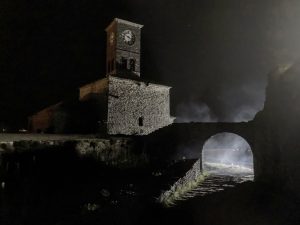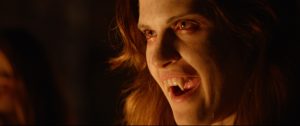By Seager Dixon, Pioneer Media Production Coordinator

For the first showing of the Pioneer Film School program, I felt it would only be right to highlight a greatly underappreciated and often forgotten aspect of filmmaking and answer the question: what does a location manager do on a film set? The title of Location Manager can often sound ambiguous. A quick Wikipedia search will come up with the locations crew being responsible for “finding and securing locations to be used, obtaining all fire, police and other governmental permits, and coordinating the logistics for the production to complete its work.” This may seem as simple as finding some amazing place, setting up your tripod, and pressing record on your camera. Unfortunately, it is not.
In order to do everything by the book, and to avoid issues not only on the day of the shoot but potential legal issues down the road, the locations department must balance the needs and limitations of the property owners, director, camera department, light and grip department, art department, and sound department. But that doesn’t even include the logistical nightmare that is having 20+ people in the same area for 12 hours. From there you must consider parking access, where catering will be held, where the bathrooms are, how many bathrooms there are, what are the conditions of the bathrooms, bathrooms, bathrooms, and bathrooms.
A real rock star locations manager tries to address all of these issues weeks before their time on set. This is done through a locations scout. The locations scout will be the first point of contact between the desired location and production. This time is used to determine what disadvantages the production could have during filming and how they can be solved a head of time. Do you have a once in a lifetime beachfront building but no access to electricity? Looks like you need to talk to G/E about a generator. Does your lush rain forest have a severe lack of plumbing? Time to call about a porta-potty. Does the 30-room mansion that your director is demanding to use without question come with a high locations fee? Might want to call headquarters for that.
Which brings us to one of the most important aspects of the locations department. For better or worse, they are the public face of the entire production. They are the first the small town sees when they show up with their point and shoot camera for the scout. They are the people blocking car and foot traffic and politely asking town folk to “hush.” They are the last the small town sees when the garbage trucks roll out from set after the production has wrapped. Much like everything else in this world, charm will get you far as a location manager. Is there a restaurant that caught your eye? Instead of walking inside and demanding to meet the owner for a business opportunity, try sitting down for a meal, chat it up with the waitress, praise the meatloaf, even go as far as wanting to meet the chef to tell him how great it is, admire the décor, admire the history of this fine establishment. Make friends and keep those friends. Once the shoot is over, that waitress will think of you every time they see that tiny speck of dried fake blood on the far-left corner of the ceiling. Your actions from day one of contact will determine if they look at that speck with a smile or a frown. A burned bridge not only hurts your production but will hurt every future production in that area.
The idea is to constantly grow the film community. This is done by not only catering to the director, production designer, and camera department, but also catering to the property owner. If you’re making a horror film, try to be upfront as you can about it. People don’t like being lied to. It will also harm your production if you lose a location day three out of seven simply because you were caught in a lie.
One is example is from the recent production of Fangoria’s remake of Castle Freak, shot entirely on location in Albania and for which Pioneer Media handled production services. One of the film’s main locations was Gjirokastër Fortress, a UNESCO World Heritage site which dates back to the 12th century AD.
Worried that the fact that a horror film might deter the director of the Fortress museum, the decision was made to tell the location that the film was a drama. Later, when a member a copy of the script was found by the museum staff, the incredulous museum director said, “why did you treat me like a fool? You should have just said a group of crazy Americans wanted to make a crazy movie!” Luckily, the incident resulted in a few laughs and production continued without incident. However, every location is different, and honesty is always the best plan of action.
Communication is key with the locations department. Be the charming, accommodating, logistical wizard we all know you can be!
A few tips for the trade:
– Baby wipes and bottles of water in bulk. You never know you could need them until you really need them.
– Tape. Duct tape. Hazard tape. Electric tape. Paper tape. All of it.
– Trash bags, the biggest, sturdiest trash bags you can find. And then get more.
– Signs. If one person spends three seconds or more saying, “where is…” times that by two times an hour for twelve hours. Times that be twenty or more people. You’ll save a minimum of twenty-five minutes of miscommunication a day.
– Invest in foldable chairs, tables, and traffic cones.
– High visibility vests. You’re going to spend a lot of time stopping cars, do you really want all your hard work to be ended because you wanted to wear black like the camera department?
Want to know more about filming in Albania or any of our featured locations? Contact us at media@mediapioneers.net.



